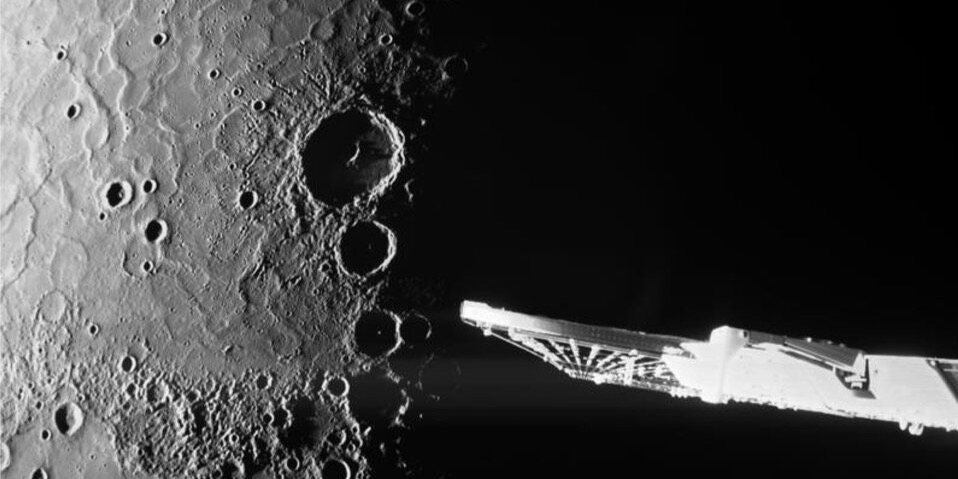
After six long years, BepiColombo made its final flyby of the little planet Mercury. In 2026, the spacecraft plans to enter orbit around the closest planet to the Sun and begin a one-year-long science mission.
As only the third mission to be sent to Mercury, ESA‘s BepiColombo mission has a lot to catch us up on since NASA‘s MESSENGER ended its mission around the planet in 2015. Before that, the only other mission to make it to the planet was Mariner 10, which made three flybys in the 1970s.
On January 9, BepiColombo flew past Mercury at an altitude of roughly 300 kilometers. This will be its closest and final flyby of the planet before entering orbit in 2026.
ESA shared three images taken by two cameras on the spacecraft showing the cratered surface of the Sun’s closest planet. The flyby flew over the North Pole of the planet, with views inside the permanently shadowed craters that could house frozen water.
These short flybys of planned orbiters usually don’t bring any new discoveries as most of their scientific instruments are turned off. But the photos show potential interests that researchers will want to take a closer look at when BepiColombo does enter orbit next year.
Some of those spots include younger lava plains that have filled in large craters at some time in the planet’s past.
BepiColombo launched back in 2018 on an Ariane 5 rocket from French Guiana. On board are two orbiters, the Mercury Magnetospheric Orbiter by JAXA, and ESA’s Mercury Planetary Orbiter. Being supported by the Mercury Transfer Module, it will drop the two orbiters off in Mercury orbit for their missions to begin and its to conclude.
The main mission of the two orbiters will be to gather more information about the planet, primarily why and how it has a magnetic field, and if water truly does exist in those deep craters.
The orbiters will also study the makeup of the planet to see if the planet is still alive, meaning if there is geological activity beneath the surface. This will also hopefully solve the question of why Mercury is so dark. While it is the closest planet to the Sun, Venus, second in line, is the brightest thanks to its thick atmosphere.
Those studies will begin in November of next year; until then, more waiting is to be had.
FTC: We use income earning auto affiliate links. More.




Comments